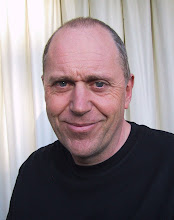A total of 28 people attended the Symposium. The programme can be seen at http://sunspotsymposium.wikidot.com/programme.
First up was a presentation by Robert Taylor from Manchester University on The Yggdrasil Data Collection Framework. This was a good overview of the data collection projects using SPOTs and of some of the planned future work but we could have done with more technical details about Yggdrasil and perhaps a demonstration.
Bart Braem, University of Antwerp, explained how SPOTs are used within their Masters course as part of the Computer Networks and Distributed Systems option. His presentation can be found here. Although the use of SPOTs is in its early days they have been popular and well-received by students, and a number of interesting projects have already been undertaken.
The replacement radio stack developed at Universität Karlsruhe was the subject of the talk by Markus Bestehorn. His presentation can be found here. This stack completely replaces all the pieces above the MAC layer but provides some backwards compatibility at the application API level with the standard stack. Marcus presented a very convincing demo and statistics to illustrate the unreliability of the standard stack when transferring large data sets (e.g. library suites) across multiple hops. He also demonstrated just how resilient the KSN stack is when faced with changing network topology.
Most of the afternoon was devoted to ad hoc Open Space-style sessions.
There were four lightning talks. John Nolan, in many ways the instigator of the SPOT project, talked about the original objectives and urged participants to focus on novel applications rather than just improvements to the SDK. Kurt Smolderen used his talk to request more general interfaces for network routing, arguing that the current interfaces were biased towards AODV. Daniel Van Den Akker described his project to rework the lower part of the radio stack to make it practical to replace either the MAC layer or the physical radio. John Daniels talked about some of the add-on boards created in Sun Labs, the upcoming revision 7 main board, and gave a demonstration of the “mega SPOT”.
There were several sessions in the longer breakout slots:
- A demonstration of the KSN management application including OTA deployment by Stephan Kessler.
- A technical question and answer session hosted by Dave Cleal and John Daniels.
- A demonstration of the use of Wireshark to analyse the output of his SPOT radio traffic packet sniffer by Kurt Smolderen.
- A demonstration of radio communication between a SPOT and a Telos mote by Daniel Van Den Akker.
- A discussion of possible thesis projects led by Bart Braem.
Everyone I spoke to enjoyed the day and thought it worthwhile. Hopefully another Symposium will be held later in the year.
